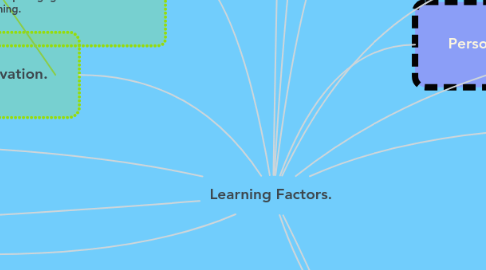Learning Factors.
by alexi diaz

1. Motivation.
2. Motivation provides the student with the necessary impulse to do a good job and efficiently assimilate what he learns. Together with the will, interest and attitude, it constitutes the nucleus of the psychopedagogical bases of learning.
3. Learning Style
4. Learning Styles are the cognitive, physiological and affective traits, which are the indicators, of how students perceive, interact and respond to different learning environments.
5. When teachers want to put into practice all the theoretical part that we know, theory and practice tend to become the greatest enemies that every teacher knows. We know that each student is different, and that each situation requires a different approach when it comes to capturing knowledge. Students, in addition to using their cognitive and metacognitive skills, must also be able to know how to prioritize, organize and prioritize their learning.
6. Intelligence and Aptitude.
7. Age
8. Age is one of the variables that has been most frequently addressed in discussions of individual differences in learning.
9. Personality.
10. All these factors are involved in learning according to the personality of each child.
11. Inheritance - Ambient -Values and beliefs - Affective experiences -Social interaction.
12. There are many factors that influence the development of the child's personality, but we especially have to take into account:
13. A person who develops in an environment with adequate cognitive stimuli develops greater skills than a person not raised in that environment. Healthy habits, rest that facilitate the development of brain processes, motivation and tools for learning favor development of intelligence.
14. However, this does not mean that there are no problems. age-related that are also complex. The age factor is decisive when it comes to language learning in general, and the differences between learning.


